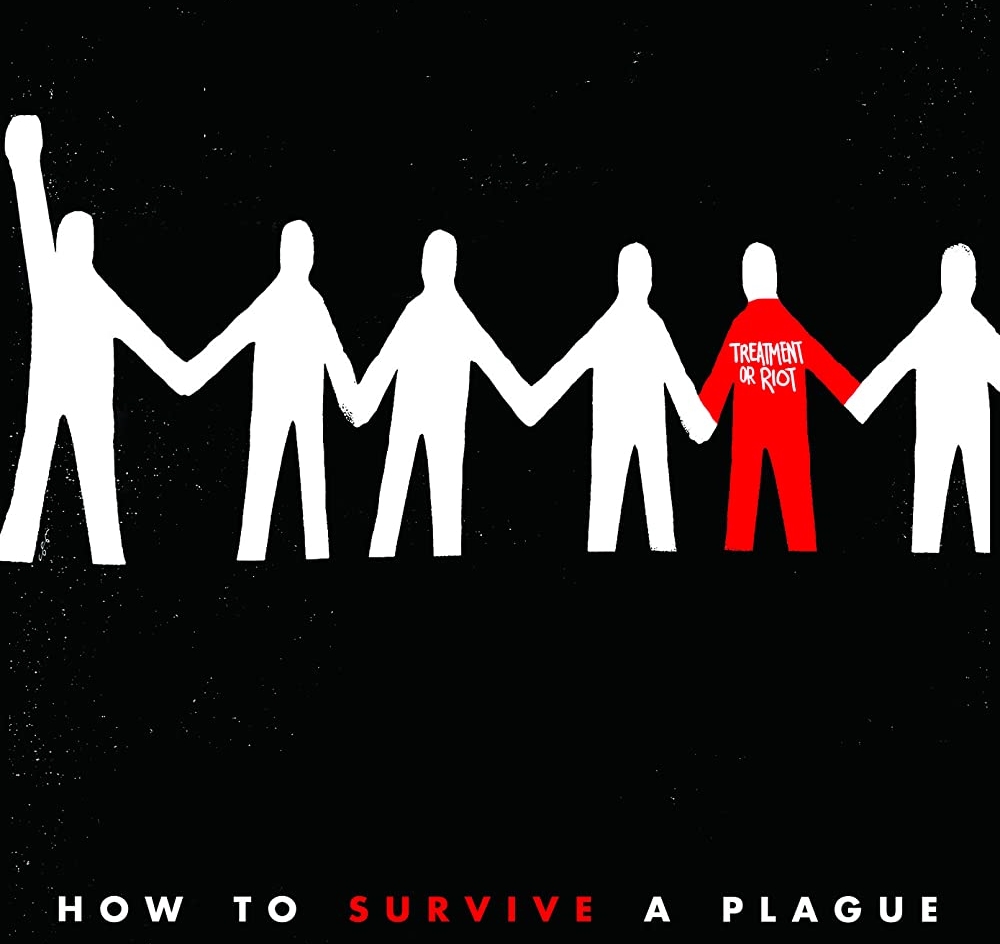“How to Survive a Plague” is a documentary that shines a blindingly direct spotlight on the activism during the AIDS and HIV epidemic from the late 1980’s until the late 1990’s period. This film is not a happy one, but the director, David France, created a documentary that has given a clear perspective of the AIDS and HIV virus from the eyes of the groups ACT UP (AIDS Coalition to Unleash Power) and TAG (Treatment Action Group).
David France has a rocky relationship within the film community and other social spheres because of his ignorance and greed when he stole the story of Marsha P. Johnson from creator Tourmaline, as stated in their Instagram post. I absolutely do not support what France has done with his Marsha P. Johnson documentary, and any person that decides they have the right to steal art should have everything they create be critically examined for plagiarism.
That being said, I think France has still made an extremely powerful documentary in “How to Survive a Plague”. France’s boyfriend died from AIDS in 1991, as mentioned in this IndieWire article, and I think that assists in validating his voice for this documentary. This film does accurately report on the lives of ACT UP and TAG members by primarily using archival footage and exclusive interviews done in 2012.
There are a few notable people highlighted in this documentary like Larry Kramer, Anthony Fauci, and Jim Eigo. More important members of both activist groups play key roles in the history of this film.
HISTORY
To appreciate and understand the impact of this film, some history is required before watching. I will be pulling some timeline information from the HIV government website and this timeline from PEPFAR.
The HIV and AIDS epidemic first started getting attention from the media and communities in 1981, so the beginning of this documentary really starts in the middle of the epidemic, which makes it difficult to follow at some points.
The HIV virus was almost immediately linked to the LGBTQ+ community, which caused the immediate and further ostracization of these community members. It wasn’t until 1989 that AIDS cases reached 100,000 reported infections as stated by this CDC article. After that, the numbers grew even faster.
“ACT UP, or AIDS Coalition to Unleash Power, was founded in NYC in 1987 as a political action group in response to the AIDS crisis. The group’s first action, in spring 1987, was a march on Wall St. to protest the high cost and lack of availability of HIV treatment.”
This quote is directly from ACT UP’s website.
ACT UP successfully started the campaign of getting more attention and action to the epidemic. The documentary goes into great detail about theirs and TAG’s foundation, so I won’t go into detail about it here.
In October of 1995, the CDC reported 500,000 cases of AIDS in the United States, and from 1990 to 1995 there were just under 1,000,000 AIDS related deaths in the world, which you can see in this graph.
My little history report does not go into nearly enough detail about the atrocities committed by those in power who prevented and stalled research, funding and support for this epidemic. The documentary, however, does do this.
THE DOCUMENTARY
The acquired film and interviews that David France used are synthesized in a way to emphasize the emotions and stories that are weaved together. One of my favorite techniques utilized in the documentary is how well peoples’ faces are highlighted. You can see their betrayal, anguish and hunger for life all in their eyes through the framing done by cinematographers.
“How to Survive a Plague” overwhelmingly succeeds in showing the impact of raising concerns and actively participating in the world around us. The collected films show people on their deathbeds participating in research and activism because they want to live. Not only do they want to live, but they want other people with their afflictions to live.
France did an alright job collecting clips from the voices in the community, but he still leaves out many voices that deserved to be heard. A CDC report from October 6, 1986 states that Black and Latinx communities were disproportionately contracting AIDS and HIV in comparison to white people. I would have loved to have seen interviews or footage from these community members rather than solely the leaders focused upon in this film.
One last thing I want to note about this film is how well it uses the death toll from the virus throughout the film. We see the numbers start around 100,000 deaths, and then they grow.
These statistics are like bookmarks in time. Each growth correlates to the inaction of those in charge, and the flattening of the curve shows the success of ACT UP and TAG.
CONCLUSIONS
As I stated in the beginning of this review, this film is not easy to watch, but I highly recommend seeing it once. The HIV and AIDS epidemic that swept through the world (and still affects millions of lives today as you can see on this graph) is still not talked about enough today.
The inaction from the US government and governments around the world has robbed the LGBTQ+ community of strong leaders and activists that could have supported the new, younger generations today. Millions of young people could have been supported by a strong community, but were instead left with a fragile support system that still continues to struggle under oppression from those against the LGBTQ+ community.
Just remember, “Silence = Death”.
-DJ chef

